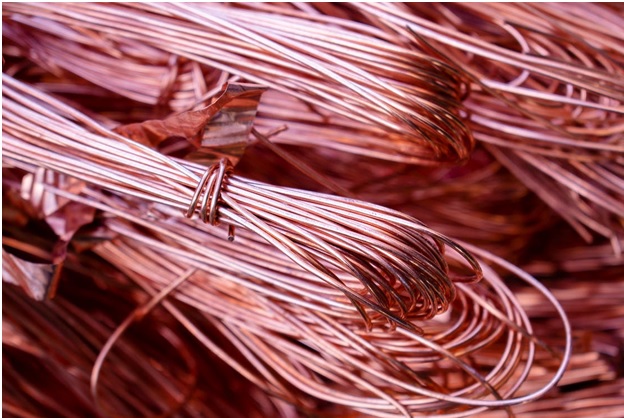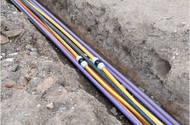Top 21 FAQs About Electrical Wire and Cable
15th Feb 2023
When it comes to electrical wire and cable, there's a lot of information to take in. With so many different types of wire and cable available, it can be hard to keep track of all the options. To make things easier, we've compiled a list of the top 21 frequently asked questions about electrical wires and cables.
1. What is the difference between wire and cable?
Wire and cable are both important components in electrical systems, but they are not the same. Wire is a single conductor (usually copper) that is insulated with a protective coating. Cable, on the other hand, is multiple conductors (usually copper) bundled together and insulated with a protective jacket.
2. What are the most common types of electrical wire and cable?
The most common types of electrical wire and cable are THHN, XHHW, UF, NM-B, and MC. THHN wire is a single insulated conductor that is often used for residential wiring. XHHW is a cross-linked polyethylene-insulated wire used for commercial and industrial applications. UF cable is a nonmetallic sheathed cable used for outdoor applications. NM-B is a nonmetallic sheathed cable used for indoor applications. MC is a metal-clad cable used for industrial and commercial applications.
3. What is the difference between solid and stranded wire?
Solid wire is a single conductor made of a single piece of metal. It is usually used for low-voltage applications, such as residential wiring. Stranded wire is made of multiple strands of metal woven together. It is often used for higher-voltage applications, such as commercial wiring.
4. What is the difference between shielded and unshielded wire and cable?
Shielded wire and cable are insulated with a metal foil or braid that provides additional protection against interference. Unshielded wire and cable are not insulated with a metal shield and are therefore more susceptible to interference.
5. What is the difference between twisted pair and coaxial cable?
Twisted pair cable is two insulated conductors twisted together to reduce interference. It is often used for computer networks and telephone lines. Coaxial cable is a single insulated conductor surrounded by a shield made of metal foil or braid. It is often used for cable television and high-speed internet connections.
6. What is the difference between plenum and non-plenum cable?
These terms are often applied to fire alarm cable and security cable. Plenum cable is a type of insulated wire or cable that is designed for use in air-handling spaces, such as drop ceilings and raised floors. Non-plenum cable is not designed for use in air-handling spaces and is not fire-resistant.
7. What is the difference between low voltage and high voltage wire and cable?
Generally, low voltage wire and cable are designed for use in applications where the voltage is less than 600 volts. High-voltage wire and cable are designed for use in applications where the voltage is greater than 600 volts.
8. What is the difference between single-conductor and multi-conductor cable?
Single-conductor cable is a single insulated conductor. Multi-conductor cable is multiple insulated conductors bundled together and insulated with a protective jacket.
9. What is the difference between aluminum and copper wire and cable?

Aluminum wire and cable are lighter and less expensive than copper wire and cable. Aluminum is also more resistant to corrosion than copper. Copper wire and cable are more conductive and less susceptible to interference than aluminum.
10. What is the difference between PVC and rubber insulation?
PVC insulation is a durable and cost-effective material that is often used for indoor applications. Rubber insulation is more flexible and can withstand higher temperatures than PVC insulation. It is often used for outdoor and industrial applications.
11. What is the difference between shielded and unshielded twisted pair cable?
Shielded twisted pair cable is insulated with a metal shield that provides additional protection against interference. Unshielded twisted pair cable is not insulated with a metal shield and is therefore more susceptible to interference.
12. What is the difference between direct burial and overhead cable?
Direct burial cable is designed for burial underground and is often used for outdoor applications. Overhead cable is designed for installation up in the air and is often used for telephone and power lines.
13. What is the difference between shielded and unshielded coaxial cable?
Shielded coaxial cable is insulated with a metal shield that provides additional protection against interference. Unshielded coaxial cable is not insulated with a metal shield and is therefore more susceptible to interference.
14. What is the difference between plenum and non-plenum coaxial cable?
Plenum coaxial cable is designed for use in air-handling spaces, such as drop ceilings and raised floors. Non-plenum coaxial cable is not designed for use in air-handling spaces and is not fire-resistant.
15. What is the difference between low voltage and high voltage coaxial cable?
Low-voltage coaxial cable is designed for applications where the voltage is less than 600 volts. High-voltage coaxial cable is designed for applications where the voltage is greater than 600 volts.
16. What is the difference between single-conductor and multi-conductor coaxial cable?
Single-conductor coaxial cable is a single insulated conductor. Multi-conductor coaxial cable is multiple insulated conductors bundled together and insulated with a protective jacket.
17. What is the difference between aluminum and copper coaxial cable?
Aluminum coaxial cable is lighter and less expensive than copper coaxial cable. Aluminum is also more resistant to corrosion than copper. Copper coaxial cable is more conductive and less susceptible to interference than aluminum.
18. What is the difference between PVC and rubber insulation for coaxial cable?
PVC insulation is a durable and cost-effective material that is often used for indoor applications. Rubber insulation is more flexible and can withstand higher temperatures than PVC insulation. It is often used for outdoor and industrial applications.
19. What is the difference between shielded and unshielded multi-conductor cable?
Shielded multi-conductor cable is insulated with a metal shield that provides additional protection against interference. Unshielded multi-conductor cable is not insulated with a metal shield and is therefore more susceptible to interference.
20. What is the difference between plenum and non-plenum multi-conductor cable?
Plenum multi-conductor cable is designed for use in air-handling spaces, such as drop ceilings and raised floors. Non-plenum multi-conductor cable is not designed for use in air-handling spaces and is not fire-resistant.
21. Why are marine battery cables and terminals silver-colored?

Marine battery cables and terminals (also known as marine grade wire) are silver-colored because they are made of individually tinned copper conductors. Marine wire is tinned to protect it from corrosion. Although it looks like silver, it is actually tin.
Marine battery cables and terminals are also made with a very high conductor count, which keeps them flexible, which is essential for establishing strong connections within the tight confines and recesses of a boat’s electrical compartment.
Quality Electrical Wire and Cable at Great Prices
We hope this list of the top 21 FAQs about electrical wire and cable has been helpful and informative. If you have any further questions, our team of experts at EWCS Wire is here to help. Contact us today and we'll be happy to answer any of your questions.

